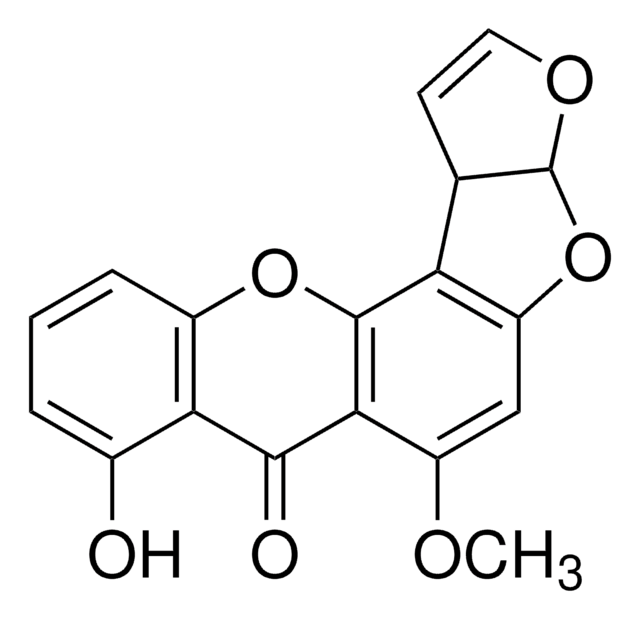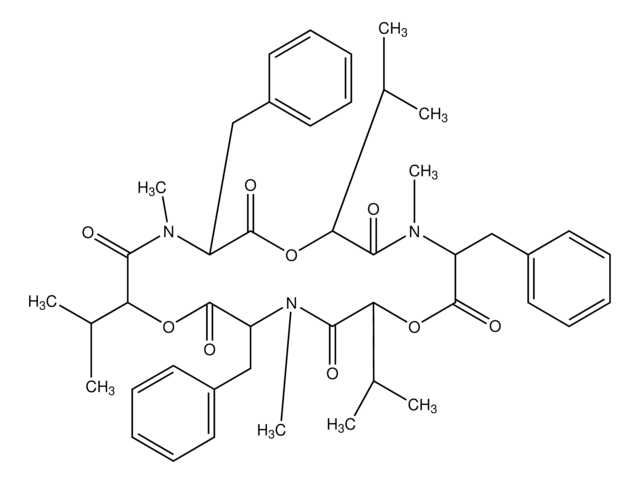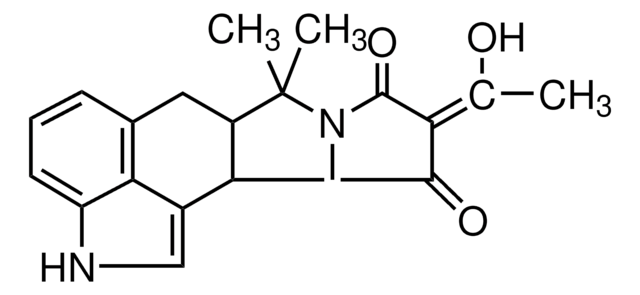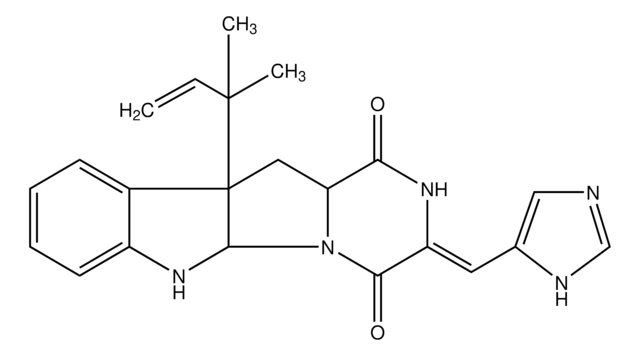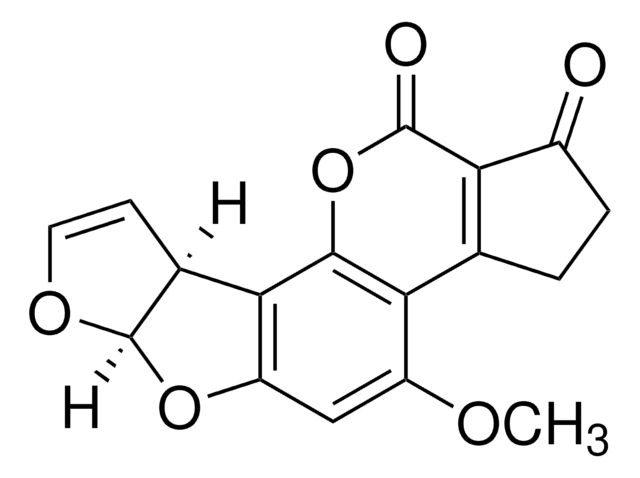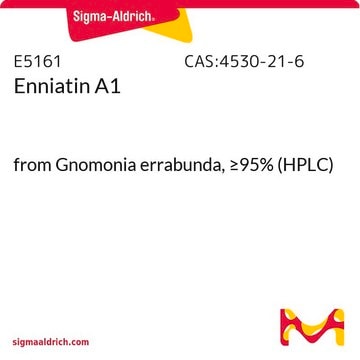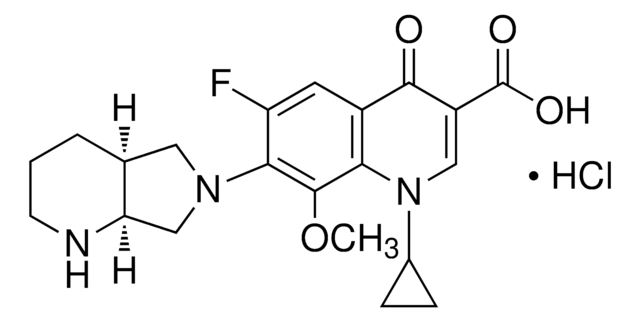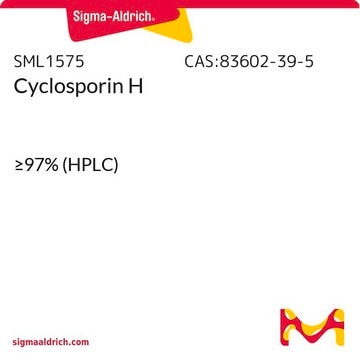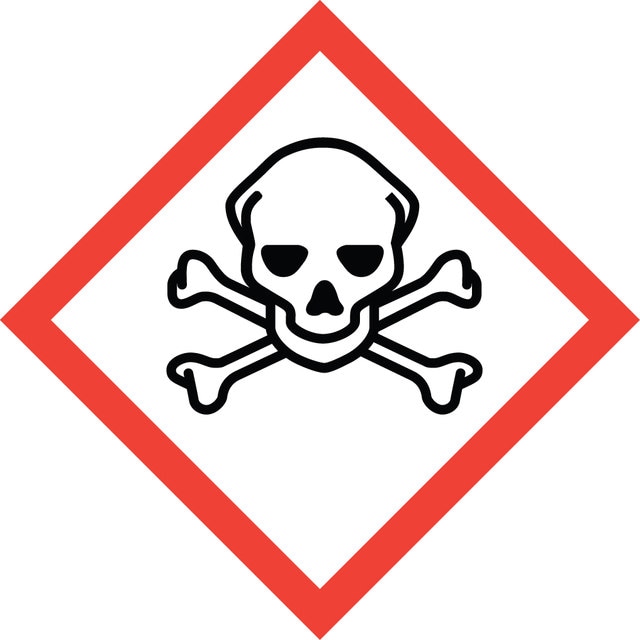S3255
Sterigmatocystin
powder, ≥98% (TLC)
동의어(들):
3a,12c-Dihydro-8-hydroxy-6-methoxy-7H-furol[3′,2′:4,5]furo[2,3-c]xanthen-7-one
로그인조직 및 계약 가격 보기
모든 사진(1)
About This Item
실험식(Hill 표기법):
C18H12O6
CAS Number:
Molecular Weight:
324.28
Beilstein:
53259
EC Number:
MDL number:
UNSPSC 코드:
85151701
PubChem Substance ID:
NACRES:
NA.25
추천 제품
생화학적/생리학적 작용
Initiates lung and liver tumors under experimental conditions.
신호어
Danger
유해 및 위험 성명서
예방조치 성명서
Hazard Classifications
Acute Tox. 3 Oral - Carc. 2
Storage Class Code
6.1C - Combustible acute toxic Cat.3 / toxic compounds or compounds which causing chronic effects
WGK
WGK 3
Flash Point (°F)
Not applicable
Flash Point (°C)
Not applicable
개인 보호 장비
Eyeshields, Faceshields, Gloves, type P3 (EN 143) respirator cartridges
Juan Wang et al.
Toxicology letters, 217(3), 226-234 (2013-01-09)
Sterigmatocystin (ST), a common environmental contaminant found across the world, is generally recognized as a potential carcinogen, mutagen and teratogen. Our previous epidemiological studies suggested that ST exposure might be a risk factor for esophageal cancer. However, the direct effects
Thomas G Rand et al.
Chemico-biological interactions, 190(2-3), 139-147 (2011-03-02)
The inflammatory potential and molecular mechanisms underscoring inflammatory responses of lung cells to compounds from fungi that grow on damp building materials is poorly understood in vitro. In this study we evaluated the effect of pure fungal compounds on potentiating
Xin Xing et al.
Molecular nutrition & food research, 55(5), 749-760 (2011-02-03)
Sterigmatocystin (ST), a mycotoxin commonly found in foodstuff and feedstuff, has been shown to be a carcinogenic mycotoxin in animal models. Many studies showed that the high level of ST contamination in grains might be related to the high incidence
Hans-Wilhelm Nützmann et al.
Applied and environmental microbiology, 79(19), 6102-6109 (2013-07-31)
Chromatin remodelling events play an important role in the secondary metabolism of filamentous fungi. Previously, we showed that a bacterium, Streptomyces rapamycinicus, is able to reprogram the histone-modifying Spt-Ada-Gcn5-acetyltransferase/ADA (SAGA/ADA) complex of the model fungus Aspergillus nidulans. Consequently, the histone
Jason C Slot et al.
Current biology : CB, 21(2), 134-139 (2011-01-05)
Genes involved in intermediary and secondary metabolism in fungi are frequently physically linked or clustered. For example, in Aspergillus nidulans the entire pathway for the production of sterigmatocystin (ST), a highly toxic secondary metabolite and a precursor to the aflatoxins
자사의 과학자팀은 생명 과학, 재료 과학, 화학 합성, 크로마토그래피, 분석 및 기타 많은 영역을 포함한 모든 과학 분야에 경험이 있습니다..
고객지원팀으로 연락바랍니다.